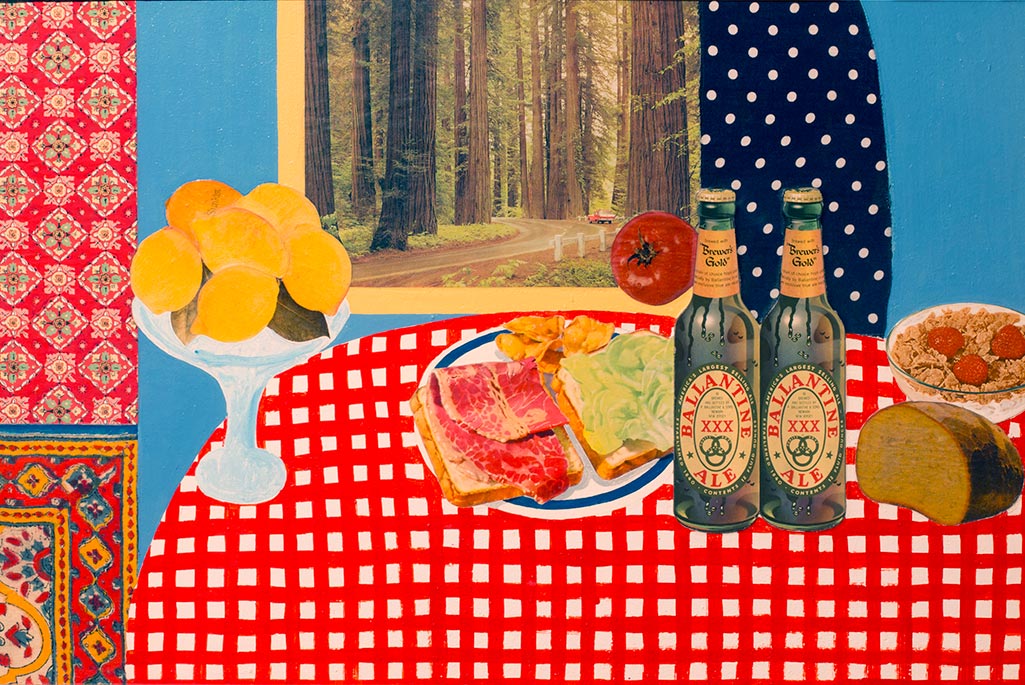Perfectly timed to coincide with the holiday season, ‘Art and Appetite: American Painting, Culture, and Cuisine’ at the Art Institute of Chicago brings together over one hundred objects, from paintings to cocktail sets, that visually chronicle the impact of food on American culture, history, society, politics, diet, and identity. Additionally, the exhibition demonstrates food’s iconic place in American art, as it was used as a source of inspiration that allowed artists and craftsmen to explore colour, texture, and media.
Freedom from Want (1942), Norman Rockwell, Lent by the Norman Rockwell Museum, Norman Rockwell Art Collection Trust. © SEPS by Curtis Licensing. All Rights Reserved.

Appropriately, the first room (of 10) is dedicated to Thanksgiving. Norman Rockwell’s iconic Freedom from Want (1942), which depicts a quintessential scene of a multi-generational family gathered around a table while grandma and grandpa proudly present the cooked turkey, hangs adjacent to Roy Lichtenstein’s Ben-Day dot Turkey (1961). It should be mentioned that the wall labels contain great morsels of little-known information regarding how and what Americans ate in the past. I shamefully admit that I was taken aback to learn that Thanksgiving, as we know and celebrate it today, was a turn of the 20th century creation, in which Americans sought to use the Pilgrim feast story as a way of defining the nation’s values for a newly diverse population.
The remaining rooms, thematically and chronologically organised, trace the parallels between the development of America’s relationship with food and America itself. They examine the agricultural bounty of the ‘new world’; Victorian-era fascination with horticulture and scientific inquiry; world markets and the introduction to new fruits and vegetables; picnic culture; responses to, and debates over, temperance; Antebellum and Gilded Ages; restaurant and cafe culture; the cocktail craze; and the changes brought on by 20th-century mass production.
Every period is brilliantly embodied through a wealth of fascinating material. I had several personal favourites. The first, the porcineograph (1876) depicts America as one giant pig. It demonstrates the versatility of the animal in cuisine through the ‘ge-hog-graphy’ of the United States. Florida, apparently, enjoyed pig’s feet with turtle soup and oranges. Another was the juxtaposition of three early 20th-century cookbooks that each featured Norwegian, French, and Mexican cuisine, subtly but wonderfully symbolising the diversity and interests of American food and culture. Finally, I loved Andrew John Henry Way’s Oysters in Half Shell (1863), a brilliant take on Dutch still-life painting, but with an American twist. Rather than feature standard Dutch still-life objects like silver trays, wine glasses, and linens, Way depicts common glasses, beer, mustard, and even a jar of pickles.
Still Life – Strawberries, Nuts, &c (1822), Raphaelle Peale. Art Institute of Chicago. Gift of Jamee J. and Marshall Field.

Speaking of still-life paintings, there are a lot of them. One of the aims of the exhibition is to address the fact that this tradition in American art has been greatly overlooked, despite its prominence. Although clearly inspired by Dutch vanitas paintings, they do not carry the heavy message of life’s transience. Instead, they each tell a story of a time in American history, evolving as culture, technology, and attitudes change. Raphaelle Peale’s Melons and Morning Glories (1813) depicts robust watermelons with glistening seeds and dripping with juice, symbolising early republican virtue and native beauty. William J. McCloskey’s Wrapped Oranges (1889) shows oranges wrapped in tissue paper… not a big deal, until one learns that tissue paper was a recent innovation to preservation, which consequently enabled produce to travel great distances at lower costs.
With such rich and vibrant material in the first seven rooms, I found the final ones, which were dedicated to modernity and the 20th century, a bit disappointing. The intimate, cozy spaces with luxurious jewel-toned walls were replaced by stark ones coated with silvery-grey paint, which felt cold and unwelcoming. Perhaps the enormity of the final room was to accommodate Claes Oldenburg’s giant fried egg and a large pile of green beans, but even then it felt unreasonably spacious. Perhaps the inhospitable atmosphere was intended to subtly comment on the fact that, as a result of mass production, Americans have lost their personal relationship with food – but this symbolic representation (or over-reading on my part!) will likely be lost on most people, and so it seemed as though the interest of those behind the exhibition (like mine) fizzled. But despite leaving a bit unsatisfied, this exhibition is tastefully done.
‘Art and Appetite: American Painting, Culture, and Cuisine’ is at the Art Institute of Chicago until 27 January 2014.





